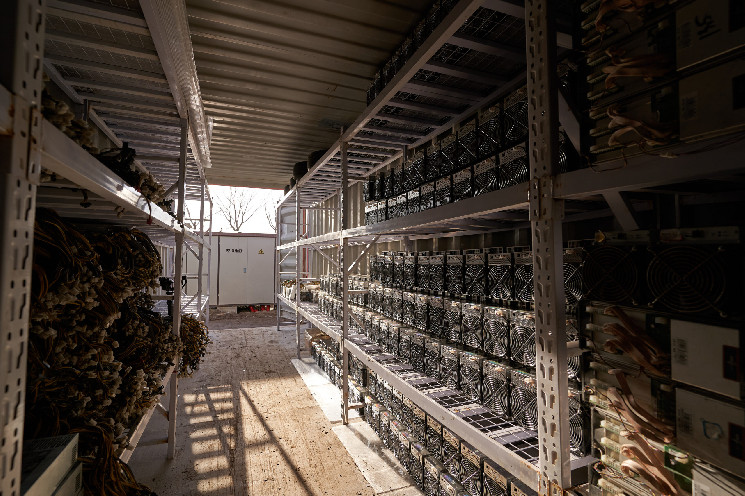Bitcoin price staged a strong comeback in the past few days and is now hovering near its highest level this year. This rally happened as investors shifted to a risk-on sentiment as evidenced by the fear and greed index and the performance of US equities. Traders are also buying Bitcoin ahead of the upcoming halving event, which is set to happen in April.
Bitcoin mining difficulty rising
On-chain data shows that Bitcoin’s mining difficulty has jumped sharply in the past few years and is now sitting at its highest level on record. Data compiled by YCharts shows that the difficulty rose to a record high of 75.50 up from January 1st’s 72.0. The difficulty has risen sharply since it was below 7 in February 2019 and was at 15.7 when the last halving event happened in 2020.
This trend shows that Bitcoin mining companies are having a more difficult time producing BTC coins on a daily basis. In this, they are having to spend more money on upgrading their mining rigs and expanding their capacity. This figure shows how difficult it is to solve the complex mathematical calculations in the mining process.
Meanwhile, Bitcoin’s hash rate has also been in a strong upward trend and it rose to a record high of 638 million TH/s on February 6th. The rate stood at 43 million five years ago and 140 million when the last Bitcoin halving happened.
Hash rate, which is also often known as hashrate, is an important metric in the Bitcoin industry because it is a measure of the computing power used by a proof-of-work (PoW) network. It is a popular measure of a network’s health.
Bitcoin hash rate trend
Bitcoin halving ahead
These numbers are crucial as investors and Bitcoin mining companies prepare for April’s halving event. Halving is a process where the block rewards are slashed into half. As such, if a Bitcoin mining company averages 20 BTC per day, it will start averaging 10. And the real figure could be less than that since mining difficulty is expected to increase after this halving happens.
This situation means that Bitcoin mining companies like Marathon Digital, Riot Platforms, and Bitfarms will likely come under pressure after the halving happens. The situation will become more difficult if the price of Bitcoin retreats.
On the positive side, Bitcoin price tends to be higher in between halving periods. It was less than $50 when the first halving happened in 2012 and over $500 when the second one happened. Bitcoin was above $10,000 in 2020. Therefore, this trend could help to offset the number of Bitcoins rewarded per day.
The post Bitcoin mining difficulty and hash rate rise ahead of halving appeared first on Invezz

